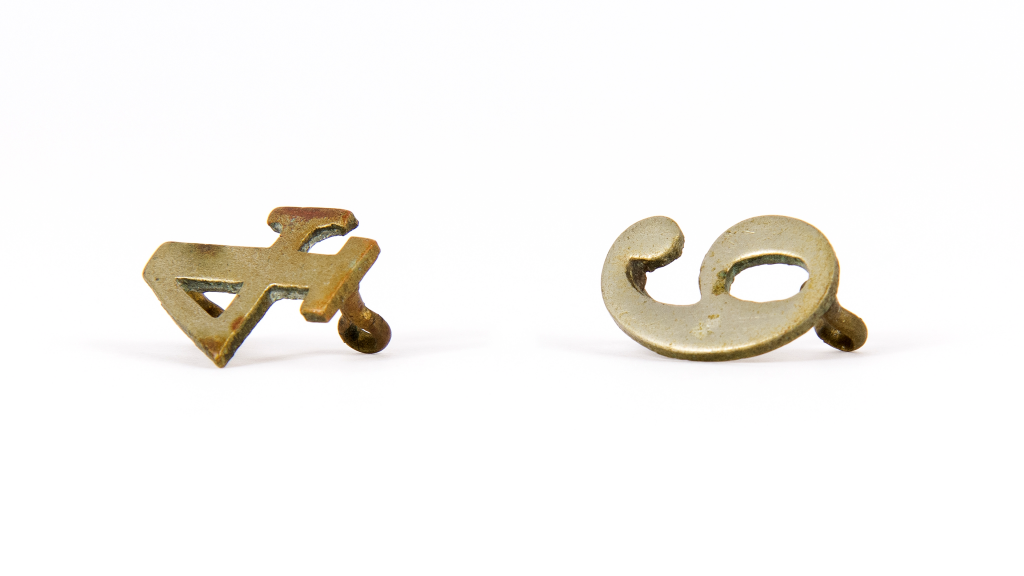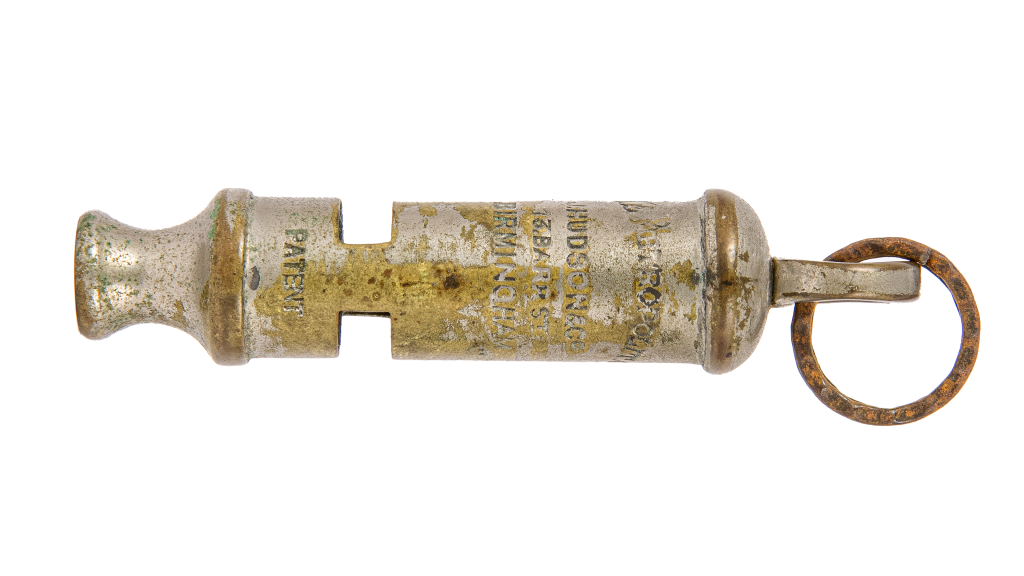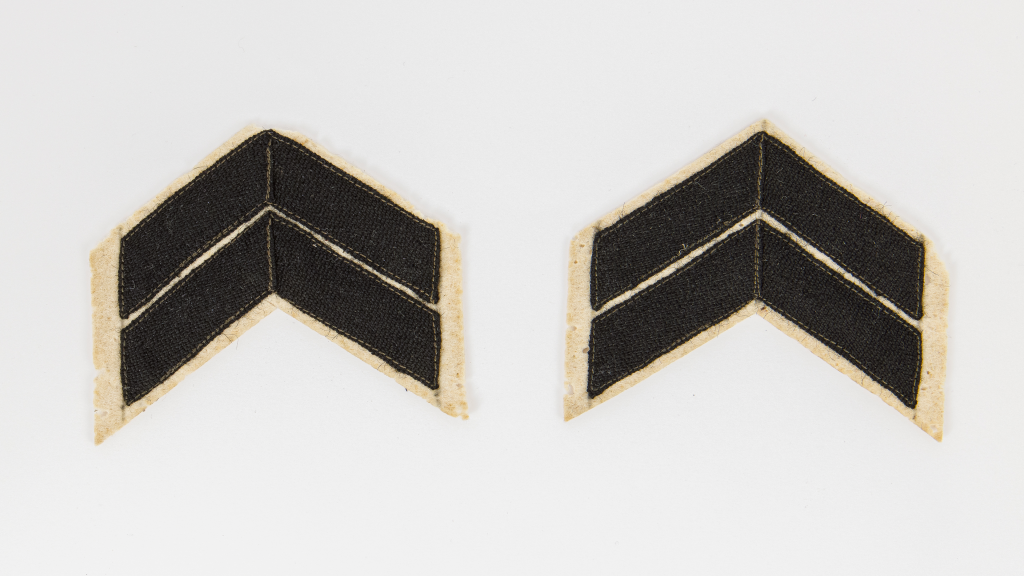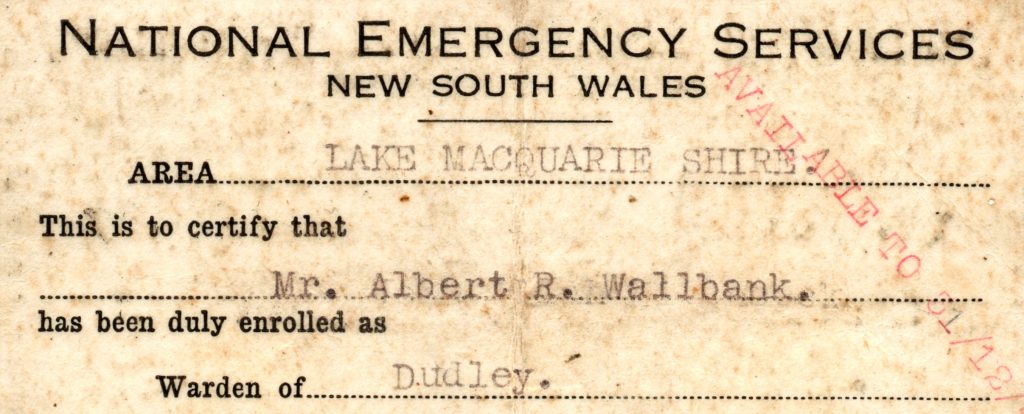
Small metal numbers were once used to signify the badge numbers of police officers. Using the small holes or loops, the numbers were hand-sewn to the high, stiff, and uncomfortable collar of an officer’s tunic. These particular numbers —two fours and a six—were found in the desk of Albert Edward Wallbank (1887-1953), an officer at […]
Read More…

Made in the famous J Hudson & Co Ltd factory in Birmingham, this whistle belonged to Senior Constable Albert Wallbank (1887-1953), a long-standing officer at Dudley Police Station, south of Newcastle. Like many aspects of standard police issue equipment in New South Wales, this whistle was inherited from the British ‘bobby’ (slang term for a […]
Read More…

After 24 years of service at Dudley Police Station, on the 20th July 1945, Constable Albert Edward Wallbank (1887-1953) was promoted to the rank of Senior Constable. Upon receiving his new rank and responsibilities, Wallbank also earned these Senior Constable stripes that were affixed to his uniform. As a policeman, Wallbank dealt with his fair […]
Read More…





